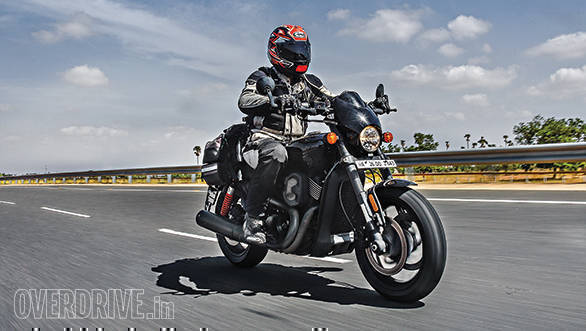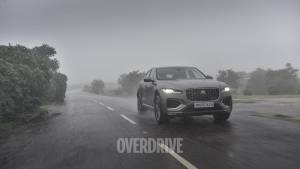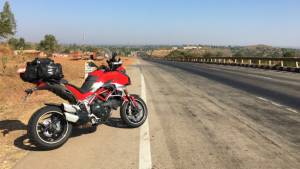Better riding: Tour-ist trophy
I've done a whole bunch of fast road runs, essentially transport stages where getting from a place to the destination is about efficiency and speed rather than detours, selfies or tourism. Over the years, I've refined this practice down to a fairly specific pattern.
1. 1,000km days are possible with almost any motorcycle
India typically has 11-12 hours of daylight and that's good enough for a fast day out on the motorcycle in natural light. I am unwilling to ride after dark and that makes an 800km day easy and a 1,200km day hard work. But they are very much possible. What you need to focus on is maintaining a high average speed and having an alternate stop point. And remember that the trucks on the highway hold maybe 80kmph but cover vast distances daily so a 6,000PS motorcycle isn't required, neither is trying to cruise at 6 million miles an hour.
2. Dealing with the dark
I like to start my riding day at 4 am for these long runs. It's a quiet time out on the highway and even the truck traffic is at its lightest. A pair of auxiliary lights help immensely and you don't have to ride at full pace to make good time till dawn. Remember to load the bike up with bags and fuel the previous night. That is worth almost an hour in all on the day of the big ride. But all my plans, without any doubt, end with the daylight. I want to be within city limits when night falls. Nothing I've seen of the highways in the recent past changes this. Nightfall also means dealing with 2-3 hours of traffic in the dark. So a 4 am start is preferable to an 8 pm finish.
3. You don't have to go super fast all day
Yes, that's the key to this. A 1,000km day requires you to measure out the rate at which you burn through your physical energy. Riding at a frantic pace will only tire you out and you'll make mistakes or you will have to stop earlier than planned. So if your natural pace is 100kmph, say, then most of the riding must be at that speed. Your natural pace is where your concentration is maximum along with your comfort with that speed. You compensate for a lower cruise speed by either riding longer, or my favourite, making very few but very efficient stops.
4. It's the stopping that costs you
Four casual stops can easily add over two hours to a ride. I tend to start by eating two or three bananas before I start. Bananas release energy slowly and they'll keep you going for hours. When you stop for gas, relieve yourself too. If you can, pop a chai and biscuit packet also. The carbs will keep you going and the tea will refresh you. The idea is that you stop once to pee, fill gas and eat. You can further trim this process if you like. I tend to stop at a gas station with a dhaba attached. I order the food and then quickly pop over and fill up while my dal and paratha are being made.
 You want a steady 100kmph cruise to produce a running average of 90kmph rather than have bursts of 140kmph and risky overtakes to only produce a 92kmph average speed
You want a steady 100kmph cruise to produce a running average of 90kmph rather than have bursts of 140kmph and risky overtakes to only produce a 92kmph average speed
5. Build up to it
A 1,000km in-saddle day is not normal. You have to teach your body to cope. It requires you to have the core strength to sit that long, concentration to ride that long and many other small elements. The only way I know how to learn all that is to ride. Start with an easy 200km run and build it up from there until you're able to hammer out 5-6 hours in-saddle stints at will. You should feel fresh at the end and your concentration for the entire duration should be absolute.
6. Don't be suckered into riding too fast for the conditions
It's easy to be swayed by a sense of urgency and try to go fast everywhere. But that's not how long rides work. As the track boys will tell you, you don't race in slow places. You have to consciously choose where you can go fast. For instance, whether you do 30 or 40kmph through a village doesn't affect your average speed, so go slow. But holding a steady 100kmph cruise for minutes on end when the highway is empty does add up. Fast average speeds aren't about 150kmph, it's about choosing the most appropriate speed for the situation with unerring accuracy for hours together - that's the real challenge. You want a steady 100kmph cruise to produce a running average of 90kmph rather than have bursts of 140kmph and risky overtakes to only produce a 92kmph average. You want to lower your risk and keep your speed steady and quick.
7. Get good gear and bags
They're enablers. If you're uncomfortable in your gear or your bags keep shifting around, or you have to stop to adjust rain covers... this all costs you time. Big mile days require you to be comfortable and for you to trust your bike and the gear mounted on it implicitly. Spend some money on gear you can trust.
8. Know when to give up
When you know 1,000km seems too distant a goal, don't become enraged and speed up. Calmly and dispassionately look for a place to stop for the night. Stop early and start again early the next morning. This is a far safer riding state than trying to cram the last 200km into 2 hours of foolhardy riding. The signs will be your exhaustion and your lapses of concentration. When these signs appear, go back into battle the next day. No ride is so important that you must take a risk.
For more Better Riding articles, click here.













